Advertisements
Advertisements
Question
In quadrilateral PQRS, ∠P : ∠Q : ∠R : ∠S = 3 : 4 : 6 : 7.
Calculate each angle of the quadrilateral and then prove that PQ and SR are parallel to each other
(i) Is PS also parallel to QR?
(ii) Assign a special name to quadrilateral PQRS.
Solution
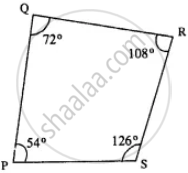
∵ ∠P : ∠Q : ∠R : ∠S = 3: 4: 6: 7
Let ∠P = 3x
∠Q = 4x
∠R = 6x
∠S = 7x
∴ ∠P + ∠Q + ∠R + ∠S = 360°
3x + 4x + 6x + 7x = 360°
20x = 360°
x = 18°
∴ ∠P = 3x = 3 × 18 = 54°
∠Q = 4x = 4 × 18 = 72°
∠R = 6x = 6 × 18 = 108°
∠S = 7x = 7 × 18 = 126°
∠Q + ∠R = 72° + 108° = 180°
or ∠P + ∠S = 54° + 126° = 180°
Hence PQ || SR
As ∠P + ∠Q = 72° + 54° = 126°
Which is ≠ 180°
∴ PS and QR are not parallel.
PQRS is a Trapezium as its one pair of opposite side is parallel.
RELATED QUESTIONS
How many diagonals does following have?
A triangle
ABCD is a parallelogram, AD is produced to E so that DE = DC and EC produced meets AB produced in F. Prove that BF = BC.
Define the following term Quadrilateral .
In a quadrilateral, define of the following Vertices .
Complete of the following, so as to make a true statement:
A quadrilateral has ....... sides.
Complete of the following, so as to make a true statement:
The measure of each angle of a convex quadrilateral is ..... 180°.
In Fig. 16.19, ABCD is a quadrilateral.
How many pairs of adjacent sides are there?
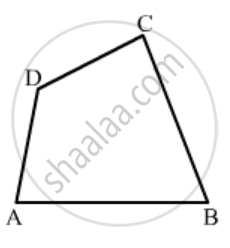
In Fig. 16.19, ABCD is a quadrilateral.
How many pairs of adjacent angles are there?
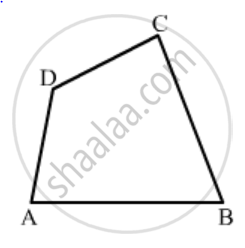
In Fig. 16.19, ABCD is a quadrilateral.
How many pairs of opposite angles are there?
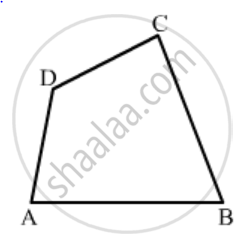
The four angles of a quadrilateral are as 3 : 5 : 7 : 9. Find the angles.
PQRSTU is a regular hexagon. Determine each angle of ΔPQT.
Complete the following statement by means of one of those given in brackets against each:
If opposite angles of a quadrilateral are equal, then it is necessarily a ....................
In ΔABC, E is the mid-point of median AD such that BE produced meets AC at F. IF AC = 10.5 cm, then AF =
In a quadrilateral ABCD, AO and BO are bisectors of angle A and angle B respectively. Show that:
∠AOB = (∠C + ∠D)
The angles A, B, C and D of a trapezium ABCD are in the ratio 3: 4: 5: 6. Le. ∠A : ∠B : ∠C : ∠D = 3:4: 5 : 6. Find all the angles of the trapezium. Also, name the two sides of this trapezium which are parallel to each other. Give reason for your answer.
In parallelogram ABCD, ∠A = 90°
(i) What is the measure of angle B.
(ii) Write the special name of the parallelogram.
If three angles of a quadrilateral are 90° each, show that the given quadrilateral is a rectangle.
The diagonals of a rhombus are 6 .cm and 8 cm. State the angle at which these diagonals intersect.
Find the angles of a pentagon which are in the ratio 4: 4: 6: 7: 6.
In the figure, PQRS and PTVS are two cyclic quadrilaterals, If ∠QRS = 100°, then ∠TVS =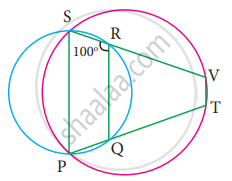
What is the maximum number of obtuse angles that a quadrilateral can have?
In quadrilateral WXYZ, the pairs of opposite angles are ______.
In figure, ∠XYZ cannot be written as ______.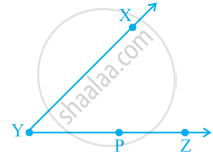
In the given figure.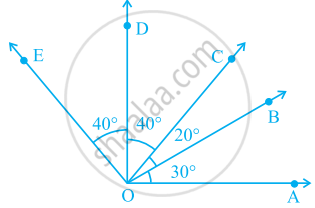
∠COA is a/an ______ angle
The common part between the two angles BAC and DAB in figure is ______.
In given figure, What is BD – DE?
Using the information given, name the right angles in part of figure:
RS ⊥ RW
